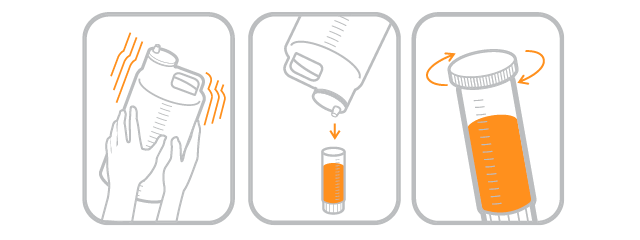Elevation

Part 1—Common Elements: What makes some customer experiences special and others ordinary? Learn what it takes to build moments that stand out from the everyday through “Elevation”.
Magnify the Appeal – What Works for Candy Works for Kidney Stones
In New York, travelers from around the world flock to Economy Candy, a small but popular shop that has become THE destination for those seeking all types of candy, including hard to find favorites and brands popular long ago. In addition to the wide selection, the shop is legendary for its sensory appeal – candy in all sizes and shapes displayed on stands, piled in bins and stacked on shelves from floor to ceiling in a festival of color that plays across every available surface.
There is a reason for this intensity.
Positive experiences are built on four common elements. As we begin to think in moments, we see opportunities to build strategies and high points that connect with customers using the first common element – “elevation”.
Economy Candy is effectively tapping into elevation by magnifying the sensory appeal of the customer experience – what customers see, hear, taste, smell, or touch. For Economy Candy, boosting sensory appeal has been the foundation of a profitable strategy to sell in high volume since 1937.
So, how might a strategy for selling candy relate to one for treating kidney stones?
Challenge:
When a kidney stone research company wanted to evolve from being an academic leader to a market leader, they asked for our help.
Looking across brand experiences and mapping processes across the patient journey uncovered important insights. With an at-home test to diagnose, track, and treat kidney stone precursors that was leading edge, patient outcomes were outstanding.
However, an unusually high 30% test error rate held revenue and profit down.
Solution:
By analyzing and mapping the complex test process from the doctor, lab and patient perspectives, we developed a strategy that included designing a number of process solutions. One of these solutions magnified sensory appeal – both visual and tactile – to improve patient experience and business results.

Translating verbal test instructions into clear illustrations enabled patients of different education levels and language fluencies to easily and accurately follow each step in their at-home test. Four simple forms replaced 20 complex forms while a newly designed custom test kit reinforced the steps in the process and enabled patients to easily confirm all samples were properly completed before sending their kit to the lab.
Results:
Test errors decreased from 30% to less than 1% within three months. Profitability per test soared.
Break the Script
A second effective way to design high points in the customer experience through the element of elevation is to step beyond customer expectations and “break the script”.
When we understand what customers (or donors, investors, clients, patients or any target group) expect, we can use that knowledge to move beyond expectations.
The challenge is that, as customers, we aren’t aware of our scripts. Behind the scenes, our brains have quietly scanned similar experiences for reference points that grew into scripts. We work from these scripts automatically, taking notice only when an experience deviates positively or negatively from what we expect.
Challenge:
For our kidney stone research client, we observed and interviewed doctors, patients and the lab to uncover that each group worked from a different script while basic expectations across all groups went unmet.
Doctors could tailor testing options to each patient but the options were confusing for both doctors and patients to navigate. The lab often needed information that patients had not received from their doctor. Sometimes patients ordered and completed the wrong test. Increasingly, patients felt overwhelmed and confused and chose not to stick with treatment, which included on-going testing that felt too complicated.
Solution:
One aspect of the solution took form as a script – literally – that put structure around options for the doctor, eliminated errors when prescribing, and simplified the conversation between patient and lab. By designing a custom script pad to organize, highlight, and prioritize information, we gave structure to a previously complex conversation. This reduced patient drop-off early in the process and created a positive experience that set the tone for future interactions.
Doctors no longer felt overwhelmed when choosing and communicating options, patients no longer felt confused when ordering, and the lab no longer felt frustrated by incomplete information that led to testing errors. More tests were prescribed by happy doctors. More tests were taken by happy patients. More tests were completed by a happy lab.
Results:
Tests increased significantly, reaching 350,000 per month. Revenue soared.
Anchor Expectations
What if an experience is new, unfamiliar, or different from what customers have previously known? What expectations will they use?
A third way to design positive experiences through the element of elevation is to anchor expectations. This means being the first to set clear expectations—and then meeting them.
For this to work effectively, you must set expectations early and often. If customers feel that you have delayed, they will supply their own expectations. When you unknowingly fail to meet them, you will be forced to do damage control.
Challenge:
Everyone knows, and fears, that kidney stones are not treatable – they will come back. Yet, our client knew they had developed an approach that could eliminate future kidney stones. Urologists trusted the research – the highly esteemed doctor behind the breakthrough was a respected professor who had written one of their medical school textbooks.
But when it came time to translate test results into a plan of action, doctors hesitated. They felt confused about precisely which variation of the protocol to follow and uncomfortable asking questions of an esteemed professor now that they were practicing doctors.
Solution:
We translated complex protocol options into a durable, illustrated reference chart that reps gifted to urologists during the sales process. The reference became a valuable tool in the company’s quest to set new expectations and battle old beliefs.

Doctors could now easily see their key decision points and follow the branches leading to a treatment endpoint. The sales discussion deepened and doctors began to feel confident that they had the knowledge and power to eliminate kidney stones and achieve outstanding outcomes.
Results:
Doctors embraced the treatment protocol, with all of its complexities and variations. They began trusting their results and volunteered to benchmark against the lab, providing ongoing data to help the company continuously improve patient outcomes.
Elevation Leads to Insight
Peak experiences are built through a combination of four elements – the first of which is elevation. To elevate an experience, look for opportunities to magnify sensory appeal, break the script, and anchor expectations.